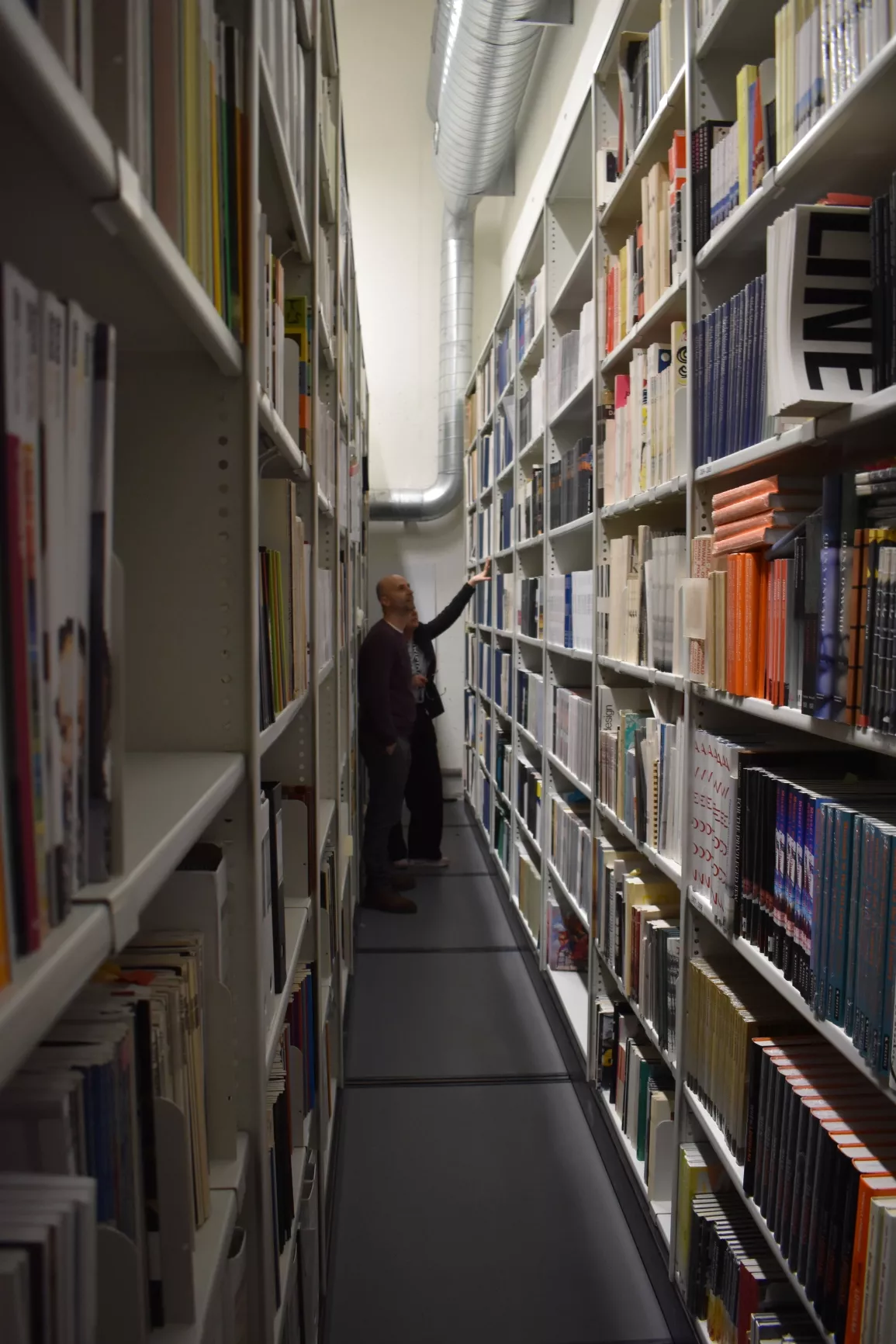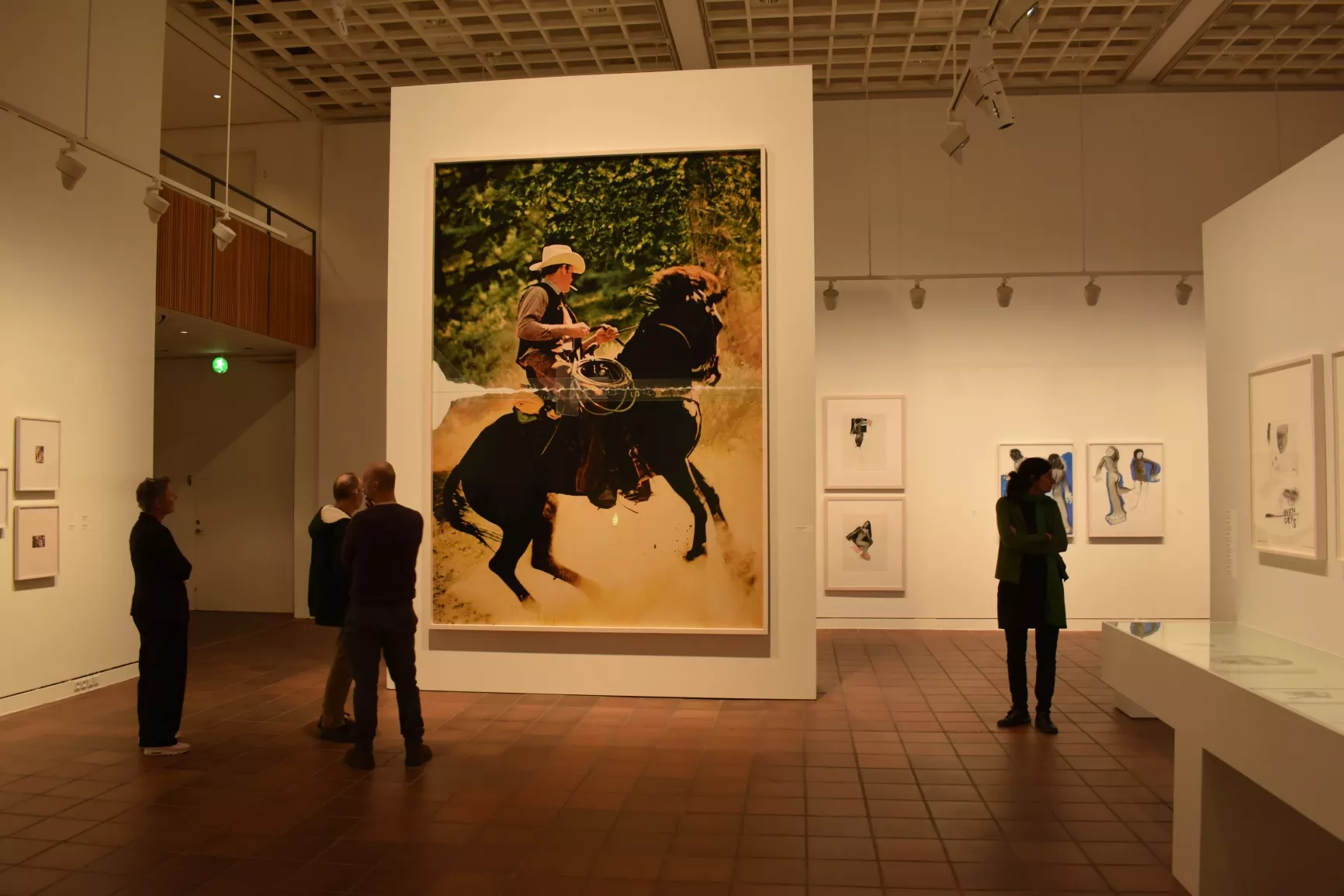New Age: Steps towards a sustainable Art Museum visit
Study visits: Neue galerie Graz and Louisiana Museum of Modern Art, Humlebaek
On the occasion of the International Day of Museums, which this year was held under the motto museums, sustainable development and social welfare, we thought it a suitable opportunity to present to you the Erasmus+ project New era: Steps to a sustainable visit to an art museum. As part of the project, we carried out two staff mobility in the first third of the year, where we focused especially on examples of good practices from related institutions, which encourage their visitors to think about the importance of sustainability in modern society. Thus, under the auspices of the Erasmus+ program, museum experts from the Božidar Jakac Art Museum - Museum of Modern and Contemporary Art from Kostanjevica na Krka (GBJ) made two important study visits to two museum institutions that are related to the GBJ in terms of their operation and structure. The purpose of the visits was to learn about examples of good practices of related institutions and to exchange experiences and transfer knowledge in various areas of museum work, such as lifelong learning, educational activities, sustainable principles and in general optimizing the experience of museum visitors. In consideration of modern museological principles, the aforementioned activities are of key importance. Communicating with different target groups of visitors, either through the exhibition programs themselves or through educational activities, is crucial for a modern museum. The Neue galerie Graz (Austria) and the Louisiana Museum of Modern Art (Denmark) are institutions that are undoubtedly very advanced in introducing innovative programs and principles in art museums.
The study visit to Graz took place in January, when I visited various units of the museum conglomerate Joanneum, which comprises twenty different units in the city of Graz and its surroundings. I concentrated to the greatest extent on the operation of the Neue Galerie, Kunsthaus, CoSA – Center for Science Activities and the Austrian Sculpture Park. In many ways, the aforementioned units of the Joanneum Museums are related to the work of the GBJ, as they include museum collections and presentations of contemporary artistic practices, often in direct connection with each other, they introduce modern approaches that combine science and technology and art, and they also appeal to the general public with a park of sculptures.
To the greatest extent, the visit was devoted to visiting and researching the operation of the Neue Galerie, located in the museum district of Graz (Museumsviertel), which specializes in modern and contemporary art. During the visit, two extensive occasional exhibitions were on display. The exhibition A War in the Distance presented an excellent example of a dialogical confrontation between artworks from the museum collection and works of contemporary art, where the past is contextualized through the present; with the help of the works of various artists, an insight into the past of the local area, the region of Styria, which is at the same time inescapably involved in global history and many geopolitical processes, was presented.

Part of the exhibition in the Neue Galerie, where the artist addresses current social issues.
On a visit to the Kunsthaus Graz, where various educational programs are an important part of the overall experience in this extensive exhibition space. The visit to CoSA – Center of Science and Art was important for understanding the operation of this kind of center for science and art, where educational activities in the form of demonstrations and simulations are the key to understanding the operation of the exhibits and prototypes presented there, which focus on the fundamental issues of today's society.
One of the most popular and visited parts of the Joanneum is also the Austrian Sculpture Park in the suburbs of Graz, where sculptures and spatial interventions by various local and international artists are placed. Due to exposure to natural elements, sculpture parks are always the subject of considerations and discussions about the sustainability of outdoor works of art, their maintenance and possible renovation. The Sculpture Park in Graz is open every day and is free of charge. In addition to viewing the sculptures and spending free time, an important segment there is also educational activities, such as public tours and artist visits; the sculpture park is a living creation, where new works are constantly added to older statues. The sculpture parks (both in Graz and Kostanjevica) thus represent a good example of the accessibility of works of art placed outside the strict museum environment, as they encourage us to think about the connection between nature and art.
In the period between March 26 and 30, 2023, a fellow curator and I went on a study visit to the Louisiana Museum of Modern Art in Denmark, which is undoubtedly one of the leading museums in the field of introducing innovative practices of sustainability and lifelong learning. Louisiana is also quite similar to GBJ in terms of its structure, as it devotes part of its extensive exhibition space to permanent installations (Alberto Giacometti, Asger Jorn), alternating installations from its own collections of modern and contemporary art, and occasional exhibitions of selected artists; temporary exhibitions by Richard Prince, Dana Schutz and Gauri Gill were on view during the visit. In the surroundings of the museum, which is located in the natural environment of the village of Humlebaek, there is an exceptional sculpture park with works by artists such as Richard Serra, Alexander Calder, Henry Moore and Knud W. Jensen. In addition, the park is a central place for socializing and spending free time during the warm months of the year.

Louisiana Museum of Modern Art
With our colleagues from the Louisiana Museum, we exchanged experiences and knowledge about museum work and highlighted the specifics of the work in both spaces, Humlebaek and Kostanjevica na Krka. The location of the two museums outside the urban centers is undoubtedly an important connecting element, so we shared experiences on tactics for appealing to the public and attracting new visitors. The Louisiana Museum is extremely successful in this, as it is visited by around 700,000 people on average per year, despite the fact that it is some 30 kilometers or half an hour away by train from the capital Copenhagen. The majority of visitors can thus visit the museum by public transport, thus ensuring as little carbon footprint as possible. For both museums, promotion is therefore extremely important, and on the other hand, the overall experience of visitors. This holistic experience, in addition to exhibitions and the opportunity to spend free time in the museum and sculpture park, also includes many educational activities for children and adults. At the Louisiana Museum, there is always a children's corner, and every day there are many public guides and workshops, often also talks with authors and lectures by various experts. During our visit, we took part in a public guided tour of the exhibition with the artist Gauri Gill.

Visiting Museum library.)
As part of the visit, we met curators from various departments; among others, the archive and documentation department, which gave us insight into the collection and documentation management systems, libraries and museum depots. We also met with the team preparing the museum's video channel, where they also communicate with the public through online platforms. On the other hand, we met at a working meeting with the chief curator for exhibitions, who presented the methods of operation of the Louisiana Museum, both from the perspective of the preparation and implementation of exhibitions, as well as from the point of view of directly connecting exhibition and educational activities. Each exhibit at the Louisiana Museum has a custom-designed educational program for a variety of audiences, helping to appeal to regular visitors and new audiences.

On a tour of the Exhibition Richard Prince: Same Man Exhibition with fellow museum colleagues from Luisian - Museum of Modern Umentity.
In both cases, the study visits were extremely useful from several points of view, both from the perspective of learning about examples of good practices of museum work, and from establishing useful connections and networks for possible future collaborations. On the basis of exchanges under the auspices of Erasmus+, the GBJ will undoubtedly adopt some important innovative solutions in offering a holistic experience to visitors through participatory educational programs and in establishing sustainable principles of the museum's operation. Connecting and exchanging experiences, knowledge and information between related museum institutions is undoubtedly key to the professional growth of museum workers and to the operation of the museum.
Miha Colner and Mladen Baćić are professional colleagues, curators at the Božidar Jakac Art Museum Kostanjevica on Krka. Their work includes preparing current art exhibitions, taking care of the art collection of the gallery and presenting the cultural heritage of the monastery and the art collection of the gallery to its visitors.




